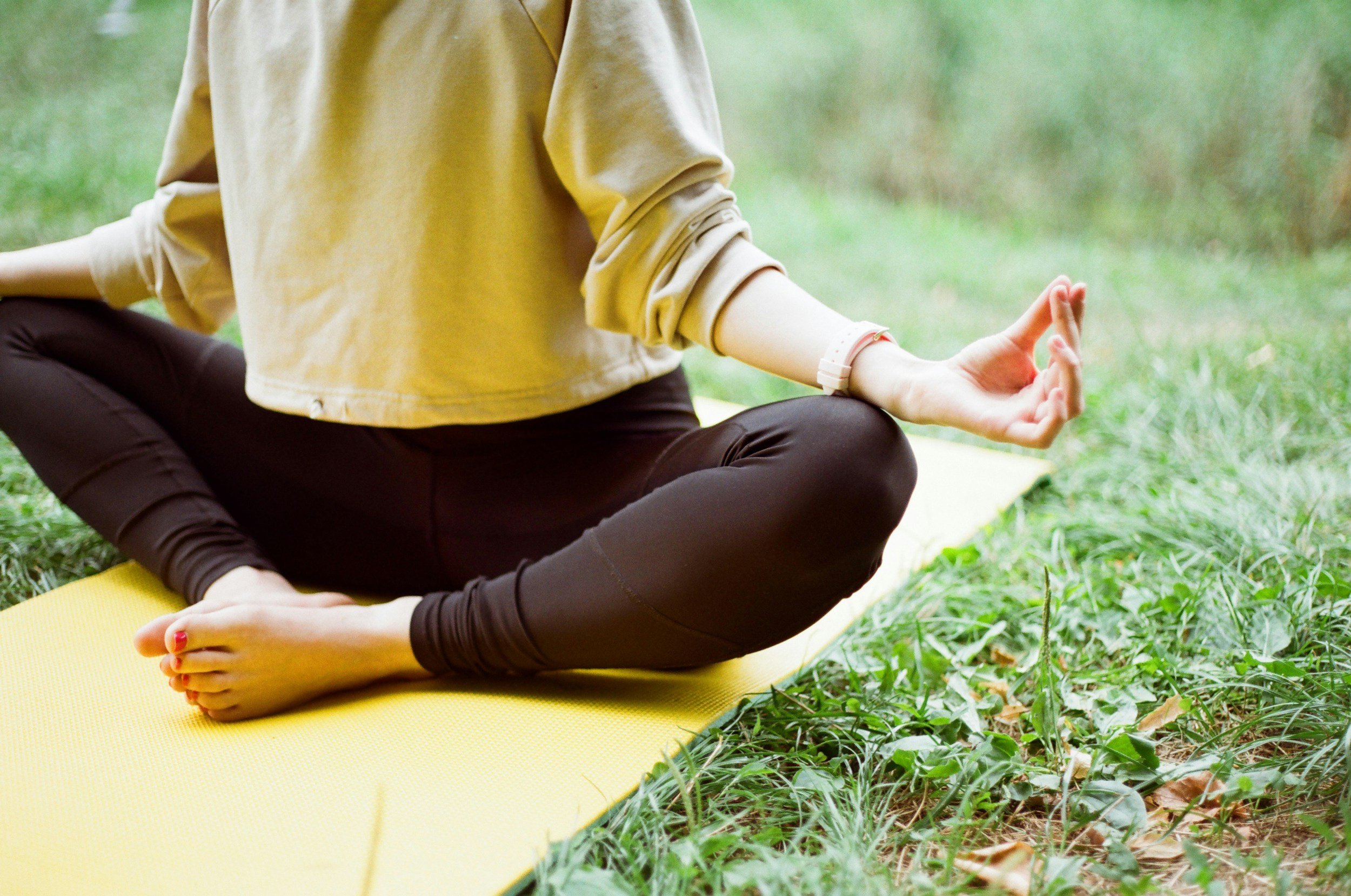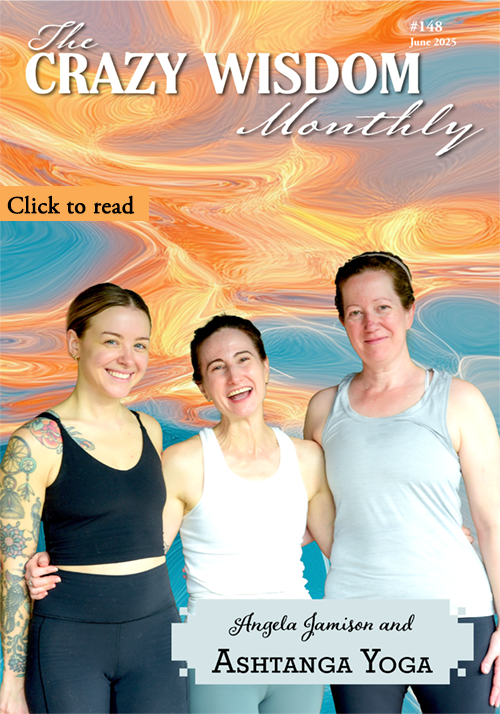Namaste Katie,
I love breathing techniques. They are a tool that I can take anywhere, and I have been using them more and more. I am hoping to find a breath practice that is efficient and grounding. In my high-pressure job, I need something I can incorporate quickly (I know, not the most mindful attitude).
Annie, Scio Township
Dear Annie,
We are all working in the spaces we have available right now, and if you have a minute, that is a wonderful space to build a practice! Recently I have been playing with kumbhaka, breath retention, as an amazing way to come back into the body. This practice develops focus and mindfulness in an efficient and purposeful way and grounds us through the breath.One beautiful kumbhaka practice is to take a nice full inhale, knowing that fullness will depend on the moment. Take a pause at the top of the inhale. Purse the lips and start to exhale slowly and forcefully, as though you were blowing out the candles on a birthday cake. Try as you are completing this exhale to not inflate the cheeks. About a third of the way into the exhale, take another brief pause for a moment or two. Exhale again through pursed lips, pause and hold, then complete the exhale. If you are comfortable with a brief retention at the bottom of the exhale, take a brief pause prior to inhaling. Take two full breaths in a soft and comfortable way, and then try this kumbhaka practice one more time.
When you have finished your two rounds of kumbhaka, take a moment to notice how the body feels, how the mind feels, and the sensations surrounding the breath spaces. Each time you practice breath retention there is opportunity to build on your awareness and create that sense of grounding and connection.
Namaste Katie,
There is a co-worker that has remained remote this entire time, which I realize is a choice, and an opportunity. I am really struggling with this, as it feels like I am stuck with resentment and anger every time we are in a Zoom meeting. Are there any strategies to let go of this emotional weight?
Eric, Ann Arbor
Namaste Eric,
This is a tough emotional space to be in, and I am sorry that you are there. Globally, there is much unrest around issues of equity and inclusion, while at the same time a feeling of isolation and separation. Contained within the Eight Limbs of Yoga are the Yamas and the Niyamas, often described as the moral tenets of the practice. These guideposts set us up for living yoga through these difficult times, whether an instance is momentary in nature or our lifetime.
One of the Yama is Aparigraha, which is translated as non-grasping or non-attachment. I often visualize this Yama as a tightly clenched fist, and with a tightly clenched fist, it is hard to receive, challenging to accept. All of us hold on, and often hold on tightly, to thoughts, feelings, and situations that are not ours to hold. When we are looking at Aparigraha we are asking ourselves through these situations, how does this serve me? What purpose does this holding have on my growth? On my emotional well-being? These are often uncomfortable explorations. Meditation can be a safe place to get next to and sit with discomfort. In explorations of Aparigraha, rarely do we release all at once, like in a game of tug-of-war. Rather, there is a slow softening and opening that comes with building our own awareness. With all the external stressors occurring, practicing self-compassion and softening (wherever we can) has the potential to bring relief to our mental and emotional spaces.
Namaste Katie,
I have spent way too much time on my couch watching TV, working, things that have made my posture less than ideal. I am hoping to spend a little time each day on something to open the front side of my body, as I feel like I am getting contracted.
Sumner, Ypsilanti
Dear Sumner,
That feeling is quite relatable! I too, have spent more time collapsing on the couch than I would like to admit, and it feels like a collapse—no orientation of my body into any sort of alignment. There are certainly ways to be more mindful in our rest, which I think most of us logically know, and is harder to put into practice. There are also ways to counteract these impacts through our yoga practice. One such posture is a Sphinx Pose.
Sphinx Pose is a posture that we come into from our abdomen. It can be nice, though not necessary, to come in from a Crocodile Pose, where we lay down, crossing the arms, stacking the forearms on top of one another, and resting the forehead on the arms. This allows the back to start to lengthen in a neutral way. When we’ve been slouched for a long period of time, this neutrality can be a helpful way to start, and can prevent the muscles in the spine from reacting to the backbend/heart opener we are about to practice.
From this space, walk the palms out in front of the body and engage the muscles of the back in order to lift the heart off the floor/mat. Simultaneously, press into the palms, and maybe the forearms. As everyone’s arms are proportioned different, this may feel slightly different as to where the contact feels most grounding. You’d like to feel the shoulder blades moving toward one another and down the back to a degree that feels comfortable. When you first start a Sphinx Pose it can be intense, so find a place where you can sit with that intensity. Adjust the distance of the arms from the body as needed to adjust the amount of backbend you are engaging in. The gaze lands where it feels right, perhaps starting toward the floor, then directly in front, and maybe even slightly upturned. See how long you can hold without the back cramping or feeling over exerted. Come back to Crocodile, or another rest space. Repeat as it feels good.
Katie Hoener is a RYT 500, receiving her 200 and 500 hour trainings. She is also a Licensed Master Social Worker and a partner at Verapose Yoga in Dexter (veraposeyoga.com). Please send your own yoga .































































































































































































For the last 15 years, in the early morning between five and eight, the 200 block of South Main Street has filled with yoga practitioners who come and go before the town comes to life. It’s a diverse group, ranging from those in their teens to those in their 80s, across all sorts of life situations and physical capacities. The yoga they practice is tailored to the individual. Depending on the person, the practice might include various physical asanas, breathing techniques, and meditations. What they all have in common is that they’re all part of a school, and a community organization, called Ashtanga Yoga Ann Arbor.